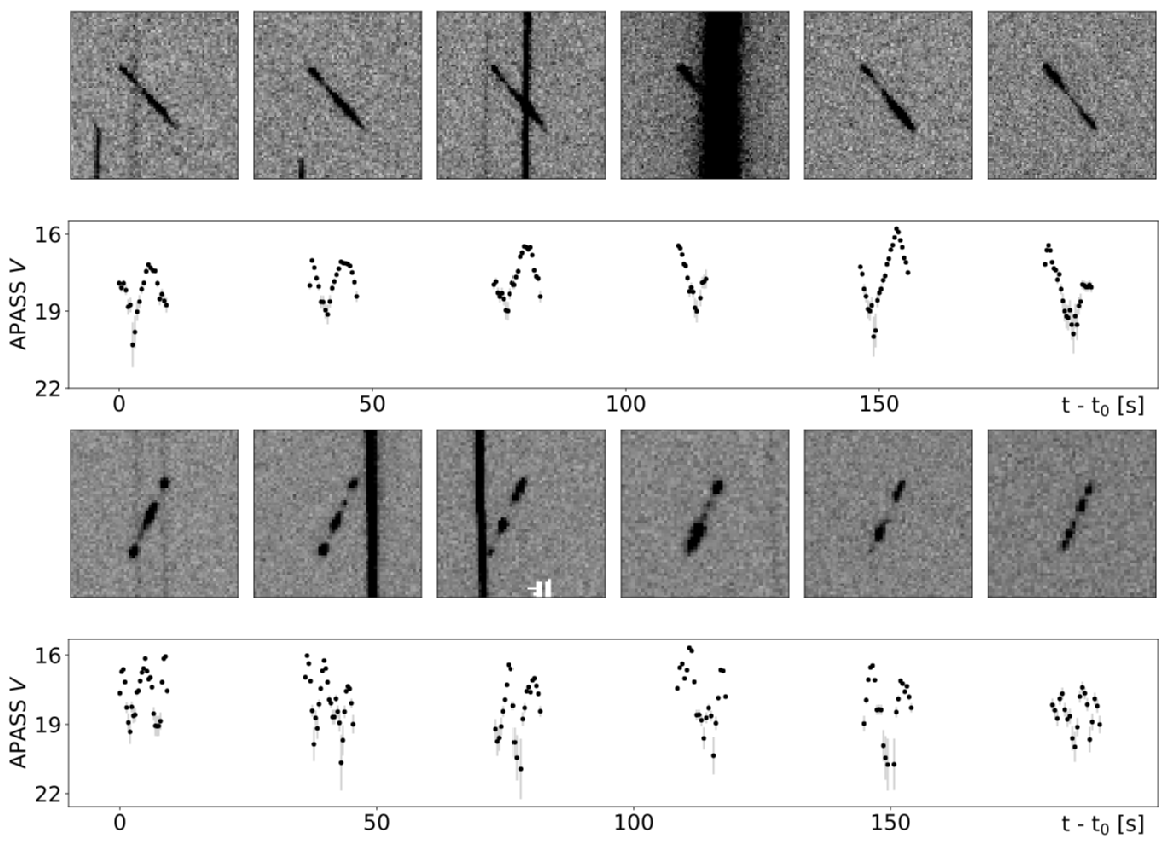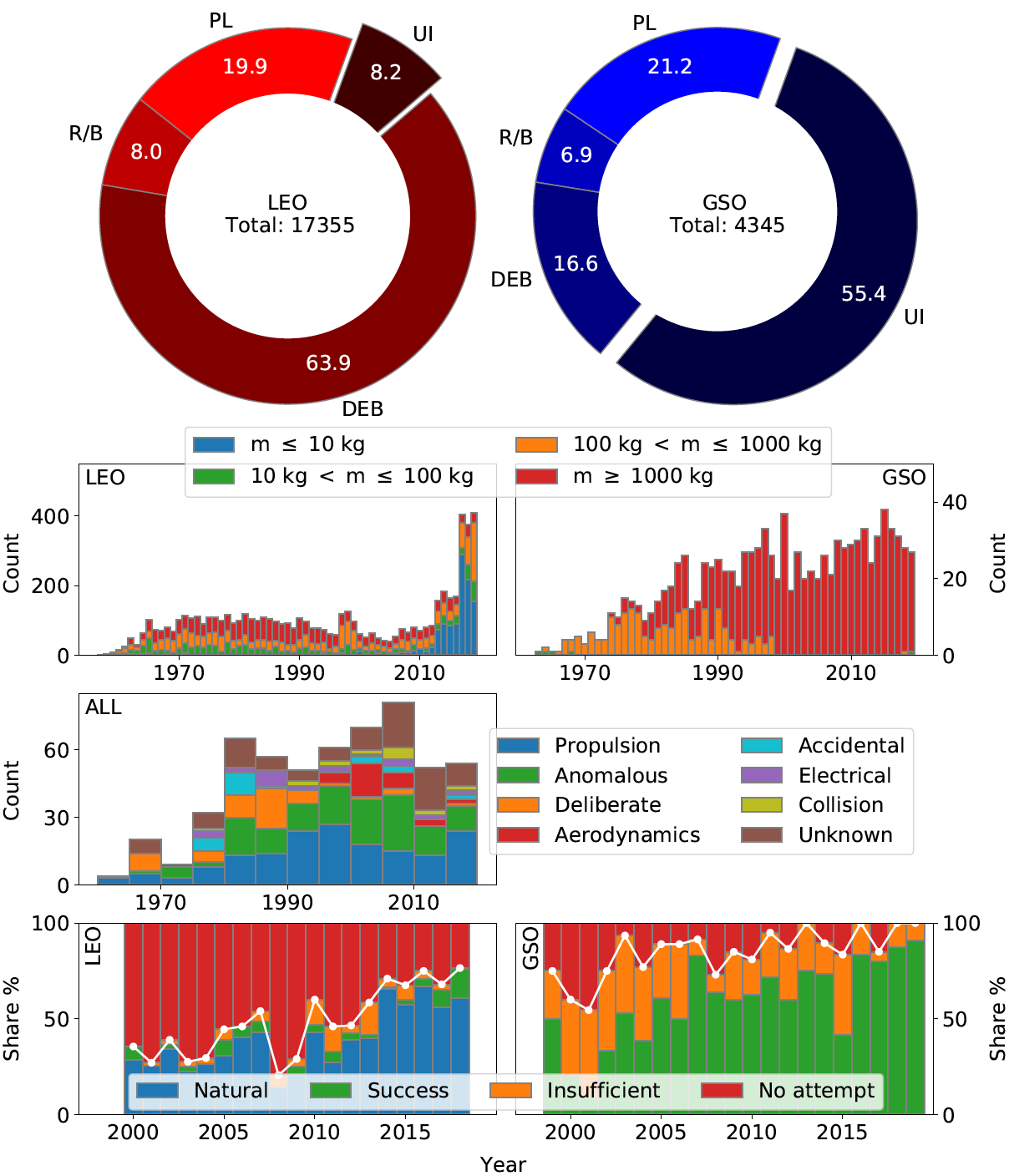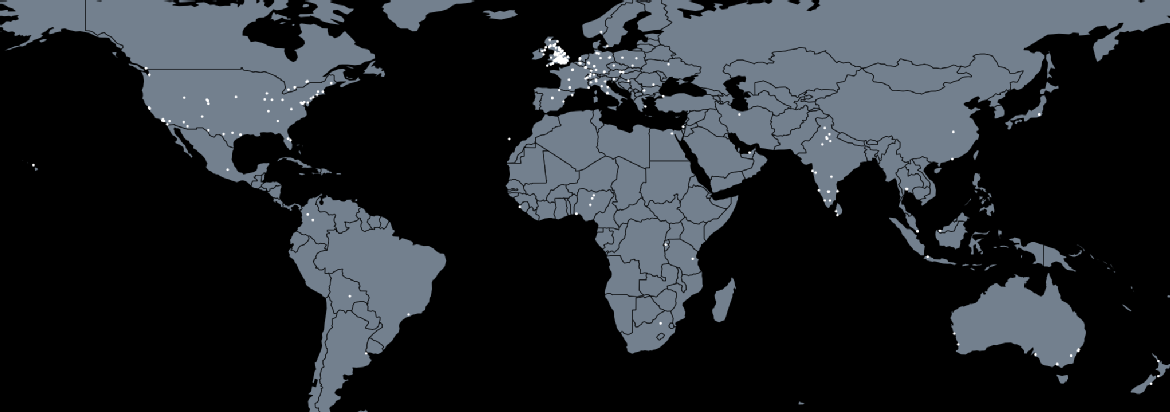James Blake - Research
My research focuses on the application of astronomical tools and techniques to the problems of space debris and space domain awareness (SDA). I also have a keen interest in exoplanetary science.
DebrisWatch: surveys of the geosynchronous region
I lead the DebrisWatch programme, a collaboration between the following institutions:
- University of Warwick
- Defence Science and Technology Laboratory (Dstl)
- Japan Aerospace Exploration Agency (JAXA)
- Australian National University (ANU)
The programme has used a variety of optical instruments to survey the geosynchronous (GSO) region, located roughly 36,000 km above the Equator, where satellites orbit with a period that matches the Earth’s rotation.
Geostationary satellites (equatorial GSOs) appear 'fixed' in an observer's sky, making them extremely useful for communications. There are a limited number of longitudinal slots for geostationary satellites, making the region some of the most expensive real estate available!

[Above] Debris field around the Earth, seen from above the North Pole. The tightly clustered shell close in is low Earth orbit (LEO, altitudes less than 2000 km), while the ring-like feature further out is the GSO region. Credit: NASA.
Far above the outermost layer of the Earth’s atmosphere, there are no natural mechanisms (like atmospheric drag) to induce orbital decay, so debris generated in the vicinity of the geosynchronous region will remain there for a very long time. Small objects are also very difficult to observe at such large range due to their faintness, so very little is known about the population of small GSO debris.

[Above]
Looking out for a sustainable space
TODO

[Above] Top row) Number of objects penetrating the LEO (left) and GSO (right) regions by object type: payload (PL), rocket body (R/B), debris (DEB), or unidentified (UI). Second row) Payload launch traffic into the LEO (left) and GSO (right) regions by mass. Third row) Number of fragmentation events by diagnosis. Anomalous fragmentations are those with an unknown cause that leave the parent body largely intact, typically assumed to involve shedding of material or impacts with small/untracked debris. Bottom row) Adherence to mitigation guidelines for the LEO (left) and GSO (right) regions, with clearance attempts categorised as naturally compliant, successful, insufficient, or not performed. White lines give the proportion of cases where an attempt was made to adhere to the guidelines. Information sourced from ESA (2020), correct as of the end of 2019.
GNOSIS

[Above]
Other research interests
During my undergraduate studies, I undertook three Undergraduate Research Support Scheme (URSS) projects:
- Attempted detection of weather patterns on HAT-P-7bLink opens in a new windowLink opens in a new window (supervised by Prof. Don Pollacco)
- Modelling the circumbinary candidate KOI-1741Link opens in a new windowLink opens in a new window (supervised by Dr. David Armstrong)
- Modelling panspermia in the TRAPPIST-1 systemLink opens in a new windowLink opens in a new window (supervised by Dr. David Armstrong)
These are links to posters that give a summary of each one.
| James Blake |
| - Research - |
| Outreach |
| Publications |
